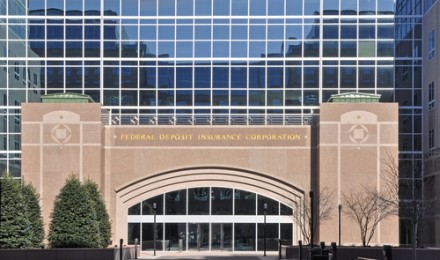The recent stock market volatility has prompted many individuals to move their savings to safe and stable FDIC guaranteed bank accounts. The FDIC guarantee means that even if a bank fails and is seized by its regulators, the individual depositor will be repaid in full up to $250,000 by the FDIC. Since the beginning of 2008 over 400 banks have failed, so more than ever people want to know the money in their bank accounts is insured. As some people liquidate their investments in the stock market, they may want to deposit more than the FDIC insured limit of $250,000 in their local bank. If their bank fails, they could lose any deposits over $250,000. Fortunately, depositors have several options to insure deposits of more than $250,000 at a single bank to ensure their money is still protected.
Different Account Categories
FDIC covers up to $250,000 per depositor, per category, per bank. This distinction means an individual account, an IRA, and a trust account would all be protected up to the full amount. While the IRS limits deposits into an IRA and trust accounts often require fees, those depositors who are worried about keeping all their money at the same bank do have the option to open different types of accounts. The depositor must be aware, though, FDIC insurance does not cover losses due to stock market performance.
Three Accounts for Married Couples
A depositor can get $250,000 in coverage per account. Individual accounts can have a cumulative coverage of up to $250,000 at each bank where money is deposited. For married couples the limit is reasonably tripled to $750,000 (two individual and one joint account).
Different Banks
For those who can take the time, depositors can open a new account at different banks and fund those accounts up to the limit. Depositors will receive multiple statements, and deal with multiple institutions. It is an option, but perhaps more trouble than it is worth. It should be noted that a different branch of the same bank does not count as a different bank.
CDAR’s
For depositors who have exhausted the various categories, they do have another option called CDARs or the Certificate of Account Registry Service. CDARs allow a person to put money into CD’s at any single, specific bank. The bank, or a service hired by the bank, then opens CD accounts at different institutions. For every $250,000 over the insured limit the person deposits, the bank will open a new CD at a different institution. Using CDARs, the depositor will have all the protection FDIC offers and they will have the convenience of keeping their money at a single bank. In exchange for the convenience of working only with one bank, the depositor will likely earn a lower interest rate.
Having more money than the FDIC insurance limit of $250,000 at any one bank is a good problem. There are many ways to keep their money all at one bank and still have it protected. Regardless of which method you choose, always check with your personal banker to confirm that all of your deposits are covered by FDIC insurance.





